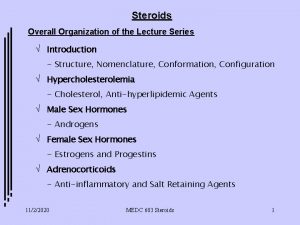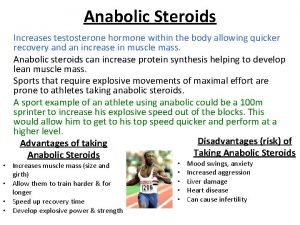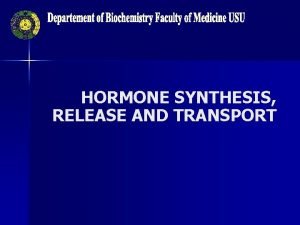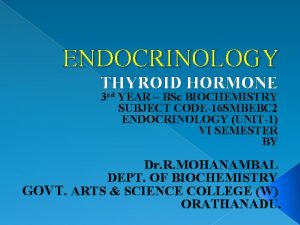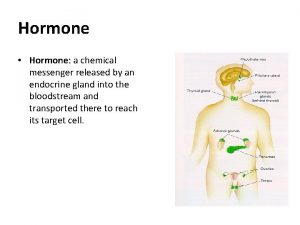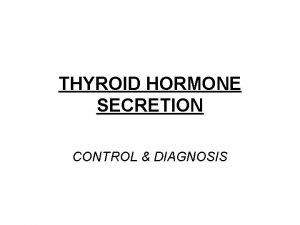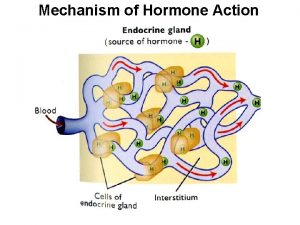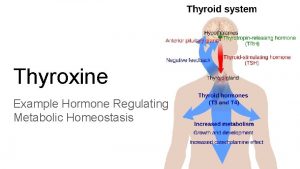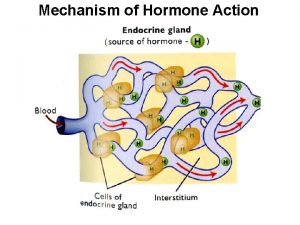Gender Affirming Hormone Therapy Timothy Cavanaugh MD CoMedical

























- Slides: 25

Gender Affirming Hormone Therapy Timothy Cavanaugh, MD Co-Medical Director, Transgender Health Program Fenway Health

Cross-Gender Hormone Therapy • Many patients have taken non-prescribed hormones – 2013 Ontario survey: 25% had ever used and 6. 4% were currently using – 2009 NYC study: 23% of transwomen currently using – 2007 Virginia Trans Health Initiative Survey: 60% of transwomen and 23% of transmen had ever used – 2001 San Francisco Study: 29% of transwomen and 3% of transmen in the past 6 months – 2000 Washington, DC Transgender Needs Assessment Study: 58% had used at some time in the past 2

Transgender Hormone Therapy • Heredity and age limit the tissue response to hormones • More is not always better


Female to Male Treatment Options • Injectable Testosterone Enanthate or Cypionate IM or SC q 1 or 2 weeks, standard dose is 50 – 100 mg weekly Testosterone undeconoate (Aveed) 750 mg initial, 4 weeks, then q 10 weeks Transdermal Testosterone Androderm ( 2 and 4 mg patches) 2 -8 mg daily Topical testosterone gels in packets and pumps, 50 – 100 mg daily, Androgel pump 1. 62% gives 20. 25 mg per pump, Androgel or Testim packets provide 25 mg (2. 5 gm) or 50 mg (5 gm) – Axiron 2% pump gel for axillary application 1 pump (30 mg) to each axilla daily – – – • Testosterone Pellet – Testopel- implant 6 -10 pellets q 3 to 6 months • Buccal Testosterone – Striant 30 mg buccal system q 12 hours

Other Treatment Considerations for FTMs • Testosterone cream in aquaphor for clitoral enlargement • Estrogen vaginal cream for atrophy • Rogaine or Finasteride for male pattern baldness • Use of Progesterone – may help to reduce estrogen levels and aid in cessation of menses before or after starting testosterone therapy.

Masculinizing Effects of Testosterone Effect Onset (months) Maximum (years) Skin oiliness/acne 1 -6 1 -2 Fat redistribution 1 -6 2 -5 Cessation of Menses 2 -6 Clitoral enlargement 3 -6 1 -2 Vaginal atrophy 3 -6 1 -2 Emotional changes Increased sex drive

Masculinizing Effects of Testosterone Effect Onset (months) Maximum (years) Deepening of voice 3 -12 1 -2 Facial/Body Hair Growth 6 -12 4 -5 Scalp Hair Loss 6 -12 Increased Muscle Mass & Strength 6 -12 2 -5 Coarser Skin/ Increased Sweating Weight Gain/Fluid Retention Mild Breast Atrophy Weakening of Tendons

Risks of Testosterone Therapy • Lower HDL and Elevated triglycerides • Increased homocysteine levels • Polycythemia • Possible worsened migraine • Male pattern baldness • Variable effects on mood • ? Increased risk of sleep apnea • Chronic pelvic pain • Mental health effects • (Hepatotoxicity) • Unknown effects on breast, endometrial, ovarian tissues • Infertility

Laboratory Monitoring for FTM Patients On Testosterone • Baseline: – CBC (Hgb/Hct) – Lipid Profile, only as clinically indicated – Liver Enzymes, only if evidence of underlying liver disease – Fasting Glucose, only if clinically indicated – ? Screen for PCOS

Laboratory Monitoring For FTM Patients On Testosterone • After 3 to 6 months, then every 6 to 12 months – CBC • Every 6 to 12 months – Lipid Profile, as clinically indicated – Fasting Glucose or Hb. A 1 c, as clinically indicated

Laboratory Monitoring For FTM Patients On Testosterone • Serum testosterone levels – at 3, 6 and 12 months, then as clinically indicated – May be checked 6 to 12 weeks after dosage change – ( about 350 -700 ng/dl) • Estradiol levels? (should be less than 50 pg/ml)


Male to Female Treatment Options • Oral Estrogens – Estradiol (estrace) 2 -8 mg PO or SL daily(can be divided into BID dosing) – Premarin (conjugated estrogens) 1. 25 -10 mg PO daily (can be divided into BID dosing) • Transdermal Estrogens – Estradiol patch 0. 1 -0. 4 mg twice weekly, may start lower in patients at risk of side effects. Maximum single dose patch available is 0. 1 mg • Injectable Estrogens – Estradiol valerate 5 -20 mg IM q 2 weeks – Estradiol cypionate 2 -10 mg IM weekly • Antiandrogens – Spironolactone (aldactone) 50 -400 mg PO daily (can be divided into BID dosing) – Finasteride (Proscar) 2. 5 -5 mg PO daily

Male to Female Treatment Options • Cyproterone Acetate (not available in US) • Gn. RH agonist: Goserelin Acetate • Flutamide an androgen receptor blocker, associated with severe liver toxicity • Bicalutamide (Casodex), used in treatment of prostate CA, ? Less liver toxicity, still with anecdotal reports of sever liver toxicity

Male to Female Treatment Options • Progestins: – Benefit on breast development, mood, sexual function – associated with increased risk of cardiovascular events and breast cancer in WHI, but how does this translate to trans women? – also risk of weight gain and depression Wierckx K, Gooren L, and T’Sjoen G. (2014)Clinical review: Breast development in trans women receiving cross-sex hormones. J Sex Med 2014; 11: 1240– 1247.

Male to Female Treatment Options • Progestins – Prometrium 100 mg – 200 mg po daily* – Provera 2. 5 to 10 mg PO daily* – Depo-Provera 150 mg IM q 3 months 17

MTF over 40 yo or at risk of VTE • Consider adding ASA or other anticoagulant to regimen • Transdermal estradiol therapy strongly recommended • Stop smoking!

Feminizing Effects of Estrogens & Antiandrogens Effect Onset (months) Decreased Libido 1 -3 Decreased Spontaneous Erections Maximum (months) 3 -6 Breast Growth Decreased Testicular Volume 3 -6 24 -36 Decreased Sperm Production Unknown Redistribution of Body Fat 3 -6 24 -36 but no regrowth Decrease in Muscle. NOTE: Mass Possible slowing 3 -6 or cessation of scalp hair loss, 12 -24 No change in voice Softening of Skin 3 -6 Unknown Decreased Terminal Hair 6 -12 >36

Risks of Estrogen Therapy • Venous thrombosis/ thromboembolism • Increased risk of cardiovascular disease • Weight gain • Decreased libido • Hypertriglyceridemia • Elevated blood pressure • Decreased glucose tolerance • Gallbladder disease • Benign pituitary prolactinoma • Infertility • Mental health effects • ? Breast cancer

Risks of Spironolactone Therapy • Hyperkalemia • Hypotension • Renal insufficiency

• Baseline: – Renal panel, if on spironolactone Lab Monitoring for MTF Patients – – – Lipids, if indicated clinically Fasting Glucose, if indicated clinically Testosterone level, if suspicion for hypogonadism Prolactin level, if on medication or sx of prolactinoma Liver Enzymes, if suspicion for underlying liver disease

Lab monitoring for MTF Patients • If on spironolactone, serum electrolytes 1 to 6 weeks after start/dosage change, then every 3 months in first year, then yearly • Lipids, glucose, LFTs only as clinically indicated • Prolactin level annually for 3 years (and beyond? ? ) • Hgb/Hct will often drop into the normal female range in women on CSHT

Lab Monitoring for MTF Patients • Serum testosterone level (at 6 to 12 months) – Should be less than 55 ng/dl • Serum Estradiol Levels – Ideal level is the mean daily level for premenopausal women (about 100 to 200 pg/ml)

Resources • Transgender Medical Consultation Service – https: //transline. zendesk. com/home • UCSF Center of Excellence for Transgender Health – http: //transhealth. ucsf. edu/trans? page=protocol-00 -00 • National LGBT Health Education Center – http: //www. lgbthealtheducation. org • WPATH SOC v. 7 – http: //www. wpath. org/documents/Standards%20 of%20 Care%20 V 7% 20 -%202011%20 WPATH. pdf • Endocrine Society Clinical guidelines – cem. endojournals. org J Clin Endocrinol Metab. September 2009, 94(9): 3132 -3154
 Dr timothy cavanaugh
Dr timothy cavanaugh Monorhyme examples
Monorhyme examples Mary beth yokomi
Mary beth yokomi Mt dunn plumbing
Mt dunn plumbing Hormone therapy
Hormone therapy Strategic gender needs and practical gender needs
Strategic gender needs and practical gender needs Inductive reasoning
Inductive reasoning Affirming the consequent
Affirming the consequent Appeal to vanity fallacy
Appeal to vanity fallacy Denying the antecedent example
Denying the antecedent example Denying the antecedent example
Denying the antecedent example Affirming the consequent fallacy
Affirming the consequent fallacy Gfallacy
Gfallacy Denying the antecedent fallacy
Denying the antecedent fallacy Contradiction truth table
Contradiction truth table Psychoanalytic vs humanistic
Psychoanalytic vs humanistic Bioness integrated therapy system price
Bioness integrated therapy system price Humanistic therapies aim to boost
Humanistic therapies aim to boost Types of hormone secretion
Types of hormone secretion Diet chart for diabetic
Diet chart for diabetic Hormone secretion
Hormone secretion Steroid nucleus
Steroid nucleus Anabolic rx24 composition
Anabolic rx24 composition Reversal of dwarfism is caused by which hormone
Reversal of dwarfism is caused by which hormone Hormone classification
Hormone classification Synthesis of thyroxine hormone
Synthesis of thyroxine hormone





















